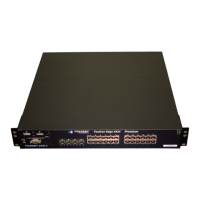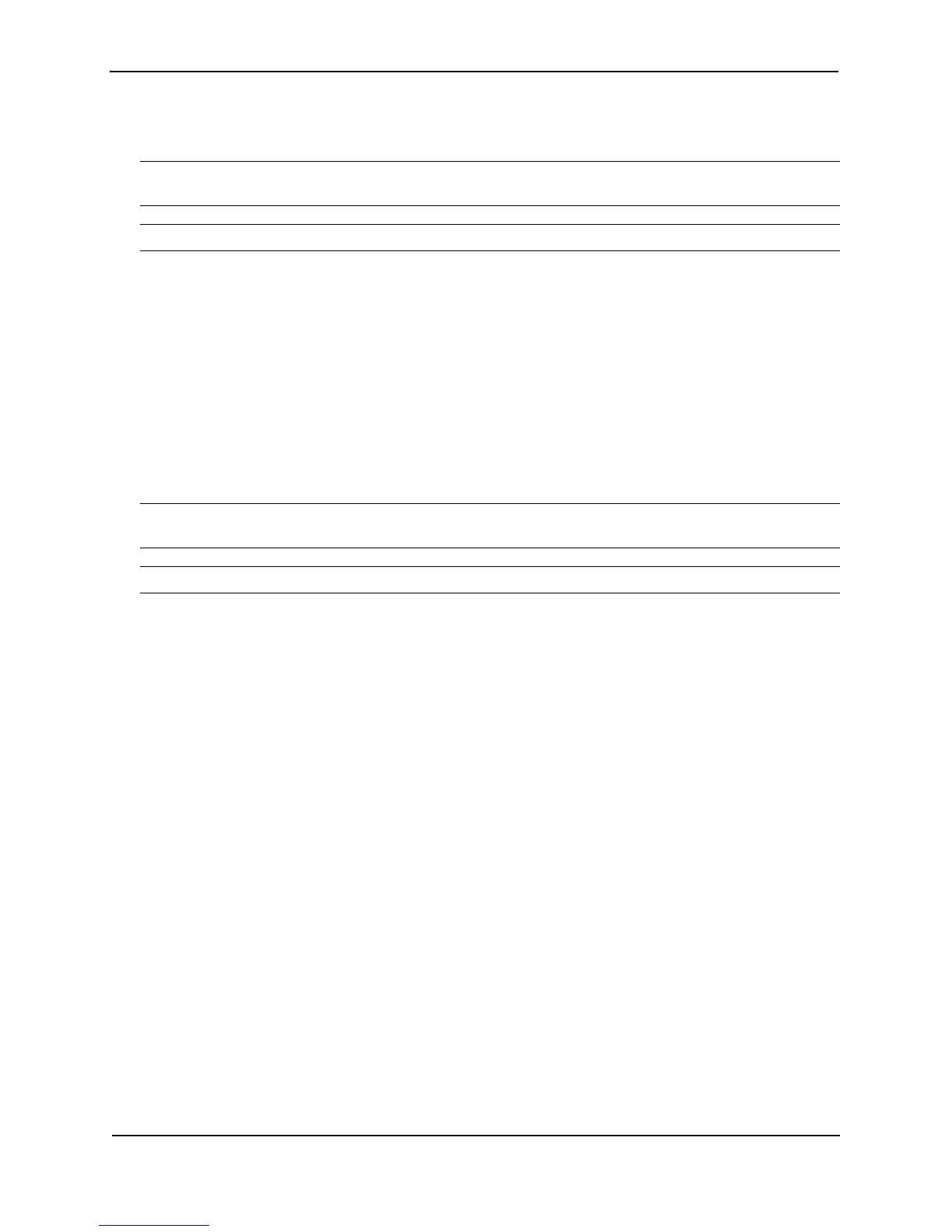Foundry Configuration Guide for the FESX, FSX, and FWSX
21 - 14 © Foundry Networks, Inc. December 2005
Alternatively, you can specify distribute-list <acl-num> in | out to use an IP ACL instead of a distribute list. In this
case, <acl-num> is an IP ACL.
NOTE: By default, if a route does not match any of the filters, the Layer 3 Switch denies the route. To change the
default behavior, configure the last filter as “permit any any”.
NOTE: The address filter must already be configured. See “Filtering Specific IP Addresses” on page 21-40.
ebgp-multihop [<num>] specifies that the neighbor is more than one hop away and that the session type with the
neighbor is thus EBGP-multihop. This option is disabled by default. The <num> parameter specifies the TTL you
are adding for the neighbor. You can specify a number from 0 – 255. The default is 0. If you leave the EBGP TTL
value set to 0, the software uses the IP TTL value.
filter-list in | out <num,num,...> specifies an AS-path filter list or a list of AS-path ACLs. The in | out keyword
specifies whether the list is applied on updates received from the neighbor or sent to the neighbor. If you specify
in or out, The <num,num,...> parameter specifies the list of AS-path filters. The router applies the filters in the
order in which you list them and stops applying the filters in the AS-path filter list when a match is found. The
weight <num> parameter specifies a weight that the Layer 3 Switch applies to routes received from the neighbor
that match the AS-path filter or ACL. You can specify a number from 0 – 65535.
Alternatively, you can specify filter-list <acl-num> in | out | weight to use an AS-path ACL instead of an AS-path
filter list. In this case, <acl-num> is an AS-path ACL.
NOTE: By default, if an AS-path does not match any of the filters or ACLs, the Layer 3 Switch denies the route.
To change the default behavior, configure the last filter or ACL as “permit any any”.
NOTE: The AS-path filter or ACL must already be configured. See “Filtering AS-Paths” on page 21-41.
maximum-prefix <num> specifies the maximum number of IP network prefixes (routes) that can be learned from
the specified neighbor or peer group. You can specify a value from 0 – 4294967295. The default is 0 (unlimited).
• The <num> parameter specifies the maximum number. You can specify a value from 0 – 4294967295. The
default is 0 (unlimited).
• The <threshold> parameter specifies the percentage of the value you specified for the maximum-prefix
<num>, at which you want the software to generate a Syslog message. You can specify a value from 1 (one
percent) to 100 (100 percent). The default is 100.
•The teardown parameter tears down the neighbor session if the maximum-prefix limit is exceeded. The
session remains shutdown until you clear the prefixes using the clear ip bgp neighbor all or clear ip bgp
neighbor <ip-addr> command, or change the neighbor’s maximum-prefix configuration. The software also
generates a Syslog message.
next-hop-self specifies that the router should list itself as the next hop in updates sent to the specified neighbor.
This option is disabled by default.
The nlri multicast | unicast | multicast unicast parameter specifies whether the neighbor is a multicast neighbor
or a unicast neighbor. For MBGP, you must specify multicast. Optionally, you also can specify unicast if you
want the Layer 3 Switch to exchange unicast (BGP4) routes as well as multicast routes with the neighbor. The
default is unicast only.
password [0 | 1] <string> specifies an MD5 password for securing sessions between the Layer 3 Switch and the
neighbor. You can enter a string up to 80 characters long. The string can contain any alphanumeric characters,
but the first character cannot be a number. If the password contains a number, do not enter a space following the
number.
The 0 | 1 parameter is the encryption option, which you can omit (the default) or which can be one of the following.
• 0 – Disables encryption for the authentication string you specify with the command. The password or string is
shown as clear text in the output of commands that display neighbor or peer group configuration information.

